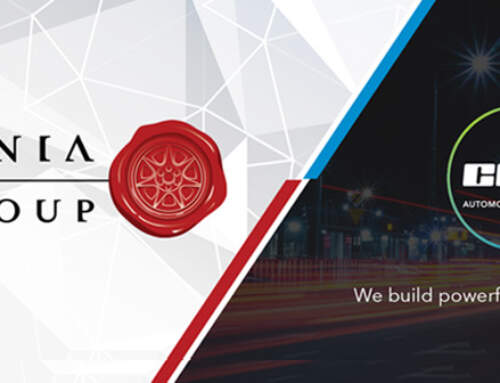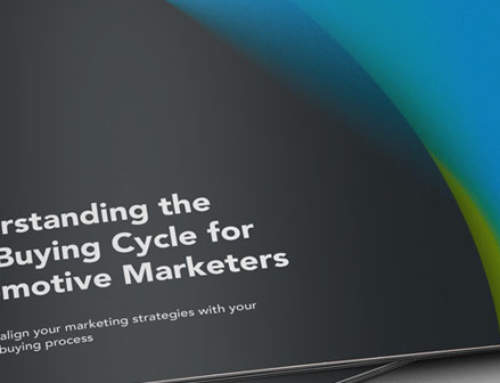The Opportunity in Disruption
How marketing during periods of disruption helps global automotive companies to thrive
An interview with GlobalAutoIndustry.com
In this interview, CMB Automotive Marketing CEO, Chris Bowers, gives his view on how disruption in automotive supply chain and the post-pandemic downturn, creates opportunity to reposition your brand and grow with continued marketing and communications.
Below follows a transcript of the interview but you can also listen to the 13 minute audio recording
Q: On the surface, it seems like a good idea to cut marketing spend in a recession. Why is that not the case?
During a recession or in tough economic conditions, many companies set stricter spending priorities and look at ways to save money. This trend is common across all areas of the automotive industry from the OEMs to supply chain manufacturers, dealerships and the aftermarket – as soon as sales start to drop, most businesses typically cut costs. Marketing expenditure, including advertising and communications, are often seen as easy areas to make cuts, so budgets and spending are typically slashed.
And although it’s prudent to contain costs, indiscriminate cost cutting and reducing marketing spend can be a big mistake. Failing to support brands or to analyse customers’ changing needs can jeopardise business performance in both the short and the long term. Companies that closely examine the needs of their customers, and adapt their strategies and messages accordingly, stand a better chance of weathering the storm and coming out of the downturn in a stronger position, with a more reputable brand and a larger market share.
By adjusting strategies, tactics, and product offerings in response to shifting demand, rather than completely cutting marketing budgets, auto companies who continue to invest in marketing are more likely to flourish during and after a recession.
Q: Do you have any examples of how this approach has worked?
Sure, during the 2008-2009 recession – in the US, Hyundai was one of the only automakers to continue advertising and marketing spending at pre-recession levels. Not only did they come out of 2009 as the highest selling vehicle importer in North America, but they shifted brand perceptions from that of a cheap, poor quality vehicle to a respectable automobile that most US consumers would be proud to own.
They managed this by continuing to invest in their marketing strategy and by adjusting the messaging they used, to reflect on the economic conditions of the time.
So, while most auto brands, including the major US manufacturers, focused marketing and advertising strategies on joyful, happy escapism themes, these adverts were out of sync with the consumers who were suffering during the recession. Hyundai hit the market with a message that resonated perfectly for the time…
“Finance or lease a new Hyundai, and if you lose your income in the next year, you can return it with no impact on your credit”
As you can imagine, with many job losses and the worst economic conditions for almost 100 years, this message resonated well with US consumers and led to increased market share for Hyundai.
While the industry overall suffered a 22% sales drop, Hyundai managed to increase its new-vehicle sales by 27%.
Q: What are the marketing opportunities for auto companies in the current downturn?
This is what I call the opportunity in chaos…
The pandemic induced shutdown of automakers throughout March to June this year has had a significant impact on the global automotive industry. Add to this is the disruption caused by political factors such as the introduction of USMCA, Brexit and trade wars with China and inevitably, as in any recession, there will be winners and losers and sadly, some suppliers won’t survive. This can leave a problem for the OEMs as they need to source new suppliers and manufacturers of the parts they require to keep assembly lines running.
The OEMs and Tier One manufacturers may be looking to establish relationships with new suppliers who can maintain stock levels, and provide assurance of supply. This creates a shake up to the existing market but also, an opportunity for forward thinking auto businesses to establish themselves and their brands. Alternatively, established suppliers may wish to strengthen their existing relationships and ensure continuity of business.
Another example of an opportunity at this time, is in the aftermarket. A reduction of new car sales potentially means good news. As consumer confidence has dropped, fewer people are opting to buy new cars and so extend the life of their existing vehicles. Lower global fuel prices have increased miles driven, returning to pre-pandemic levels in many locations.
Inevitably this leads to enhanced requirement for servicing, parts and consumables – so a potential boost for the aftermarket sector. Since the first week of March 2020, online auto parts and accessories sales have increased more than 50% throughout North America. This pattern of a switch to online sales is common in most regions around the world, including Europe and Asia.
This nicely illustrates that amidst the chaos of a downturn, there is always opportunity. Whether that is to gain more awareness of your brand, or to grab new customers, or to tap in to a new revenue streams such as e-commerce. But you will only stand a chance of winning these new opportunities if you’re continuing your marketing and communications.
Furthermore, when a brand cuts its marketing and advertising it loses ‘share of mind’ with consumers and customers. This usually translates in to loss of revenue and sales – further compounding the problems of a challenging economic downturn.
Increasing awareness through marketing and advertising typically translates in to increased sales and profitability. This is basic marketing and business sense – so why this is thrown out of the window during tough economic times seems counter intuitive. But forward thinking brands can take advantage of this situation.
Customers are drawn to brands who continue to communicate to their markets. Effective marketing and communication will ensure your brand is top of mind during a period of real need – while your customer is in a position when they need to find a new supplier or need to buy a specific product. Being visible during these periods when buyers have changing needs is essential – and marketing plays its key role here.
My recommendation is to consider areas of disruption and to reposition your brand accordingly. Support the industry where there are potential gaps and opportunities.
For example, with the introduction of USMCA in North America, automakers are beginning to shift suppliers away from Asia and into Mexico. The Japanese government is offering its automakers financial support to move supply chains out of China. In Europe, with disruption around Brexit and the shift of manufacturing to Central and Eastern Europe, auto makers are sourcing more and more from Slovakia, Hungary, Poland and the Czech Republic – all of which have growing auto industries.
By developing a global strategy, auto suppliers can introduce their brands and products into new export markets and fill demand there. By marketing within these regions, you will increase brand awareness, drive new sales leads and ultimately grow your business. There’s never been a better time to develop your global strategy than now!
Q: Are there any other benefits in continuing marketing during a recession?
During a recession, brand ‘noise level’ reduces as competitors cut their marketing, and advertising. This allows the savvy marketer to gain stronger cut-through and more impact from continuing or even enhancing their marketing programs. Often, this lull in the marketing landscape creates an opportunity for brands. By continuing to invest in advertising, they can reposition themselves or introduce new products – being able to do so at a much lower cost and gaining significantly more impact than would normally be the case.
Continuing communications and marketing allows the company to project a positive image and one of corporate stability throughout difficult times. This can be an important factor for an OEM or a Tier 1 when it decides to look for new suppliers. Maintaining communications and media visibility lets the market know you’re still open for business – a very important message.
In addition, many automotive journalists and media outlets are beginning to look for news stories outside of the Corona Virus. By pitching your press releases to the right journalists, with the right story, you are more likely to get coverage and exposure you need for your brand during this period.
During a downturn, industry media becomes a buyer’s market. With your competitors slashing their advertising budgets and cancelling marketing, industry media can be badly affected. Traditional and digital media platforms begin losing significant revenue from loss of advertising and turn to delivering added value and cut-cost opportunities. With some canny negotiating and clever approach to media spend, marketers are able to get a lot more bang for their buck and stretch their ad spend to deliver significantly more value than in other times. In addition, this provides an opportunity to build relationships with media accounts teams, which can help provide better value and cost effective advertising over the longer term.
Finally, cutting marketing and ad spend does nothing for consumer confidence. The auto industry relies on selling cars. If people don’t want to buy cars, it affects the entire supply chain upstream and downstream. Building consumer confidence is a key focus in a down turn – to ensure consumers continues to buy, in-turn generating business up and down that supply chain.
Q: Do you have any recommendations
The global auto industry is going through considerable disruption and the downturn in economic conditions has reduced consumer confidence, leading to dropping sales. Political factors such as USMCA, Brexit and US/China trade wars are also driving disruption and potentially exasperating the market conditions.
Disruption and chaos can lead to opportunity but marketers must adjust their strategies and messaging accordingly, matching to their customers’ needs.
Reach out to your customers to uncover their concerns – and don’t gloss over the reality of these concerns. Re-map your positioning, your value proposition, your marketing and sales processes to ensure you’re well aligned with their needs. Get creative with your offerings. Rather than simply cutting your pricing, look to add value through other means and build long term customer loyalty as a result.
Consider developing or expanding your export strategy. Would your brand or product be a good fit for a new territory or would it fit a gap in the disrupted supply chains as OEMs jostle to source new suppliers in these territories.
Online sales and e-commerce are areas the global auto industry can stand to improve and focus more on. All indications are an acceleration toward e-commerce. Existing e-com accounts now see more purchases and traditional brick and mortar retailers are improving their online and digital footprints.
Finally, there is now an opportunity for brands to reposition themselves or to consolidate within their markets. While the brand ‘landscape’ is quieter and with less competition than normal, marketers can achieve more with less budget at this time. Take advantage of this period to enhance your brand communications and to deploy carefully considered marketing programs. Now is the time to strike!
If your automotive company needs help to reposition itself, re-align its marketing approach and to quickly generate new leads and sales, contact CMB today for a friendly, no obligation discussion on how we can help.











